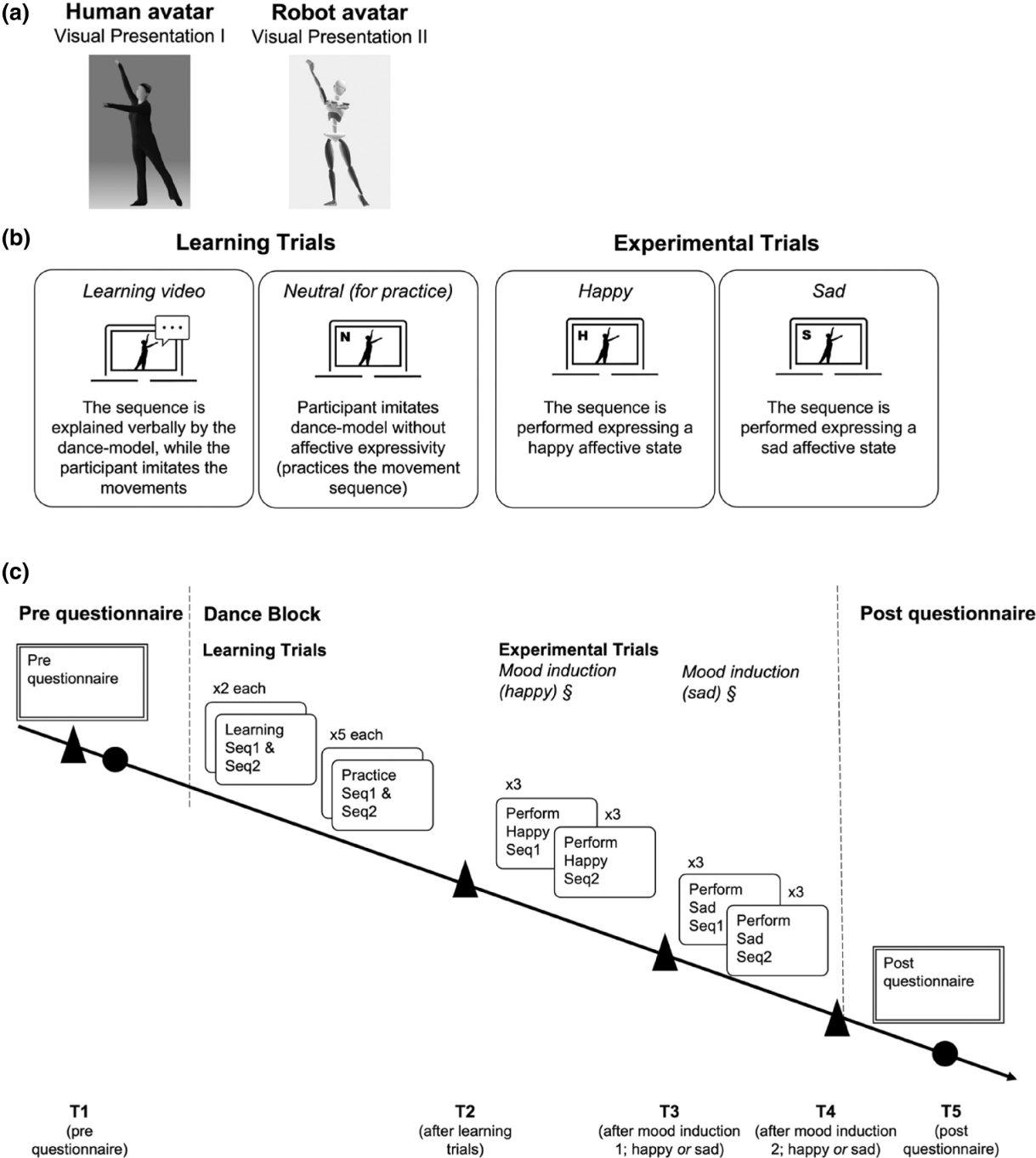Mood Regulation Through Dance
In the past few years, I had the pleasure to collaborate with a team of psychology researchers led by Dr. Julia F. Christensen at the Max Planck Institute for Empirical Aesthetics. We conducted a variety of research projects involving the connection between dance and emotion in different cultures and following computational approaches (see e.g. this other post).
One interesting aspect is to check whether full-body (dance) movements have a therapeutic impact in regulating participants’ mood. This is the subject of our study, recently published at the British Journal of Psychology:
- Paper: [pdf], [online]
- Code: https://github.com/andres-fr/emokine
Here is the full reference:
@article{https://doi.org/10.1111/bjop.12681,
author = {Schmidt, Eva-Madeleine and Smith, Rebecca A. and Fernández, Andrés and Emmermann, Birte and Christensen, Julia F.},
title = {Mood induction through imitation of full-body movements with different affective intentions},
journal = {British Journal of Psychology},
volume = {n/a},
number = {n/a},
pages = {},
keywords = {affect, avatar, bodily expression, dance, embodiment, human–avatar interaction, mood regulation, movement},
doi = {https://doi.org/10.1111/bjop.12681},
url = {https://bpspsychub.onlinelibrary.wiley.com/doi/abs/10.1111/bjop.12681},
eprint = {https://bpspsychub.onlinelibrary.wiley.com/doi/pdf/10.1111/bjop.12681},
}
And here is a press release by Ina Wittmann that provides a good overview of the results and their implications. The TLDR is that:
- Most studies focus on how we perceive of full-body movements. In contrast, this work is about how body movements can induce emotions.
- In the study, participants were asked to repeat certain movements with different affective intentions (happiness, sadness).
- The main result is that the experiment did have a therapeutic impact in regulating participants’ mood.
- Interestingly, providing participants with video-renderings of a robot avatar instead of recordings of a human dancer did not have have a significantly different outcome.

While this is on the less computationally-heavy side of research, it is natively digital (conceived and developed during the COVID-19 pandemic) and it underlines the importance of collaborations between the disciplines of psychology, dance and computer science towards understanding human emotions. Coming from the computational side, it is very edificating to learn how psychologists design experiments aimed to learn about human perception, and how can quantitative/computational methods dance to that tune. But maybe that’s a topic for another day!